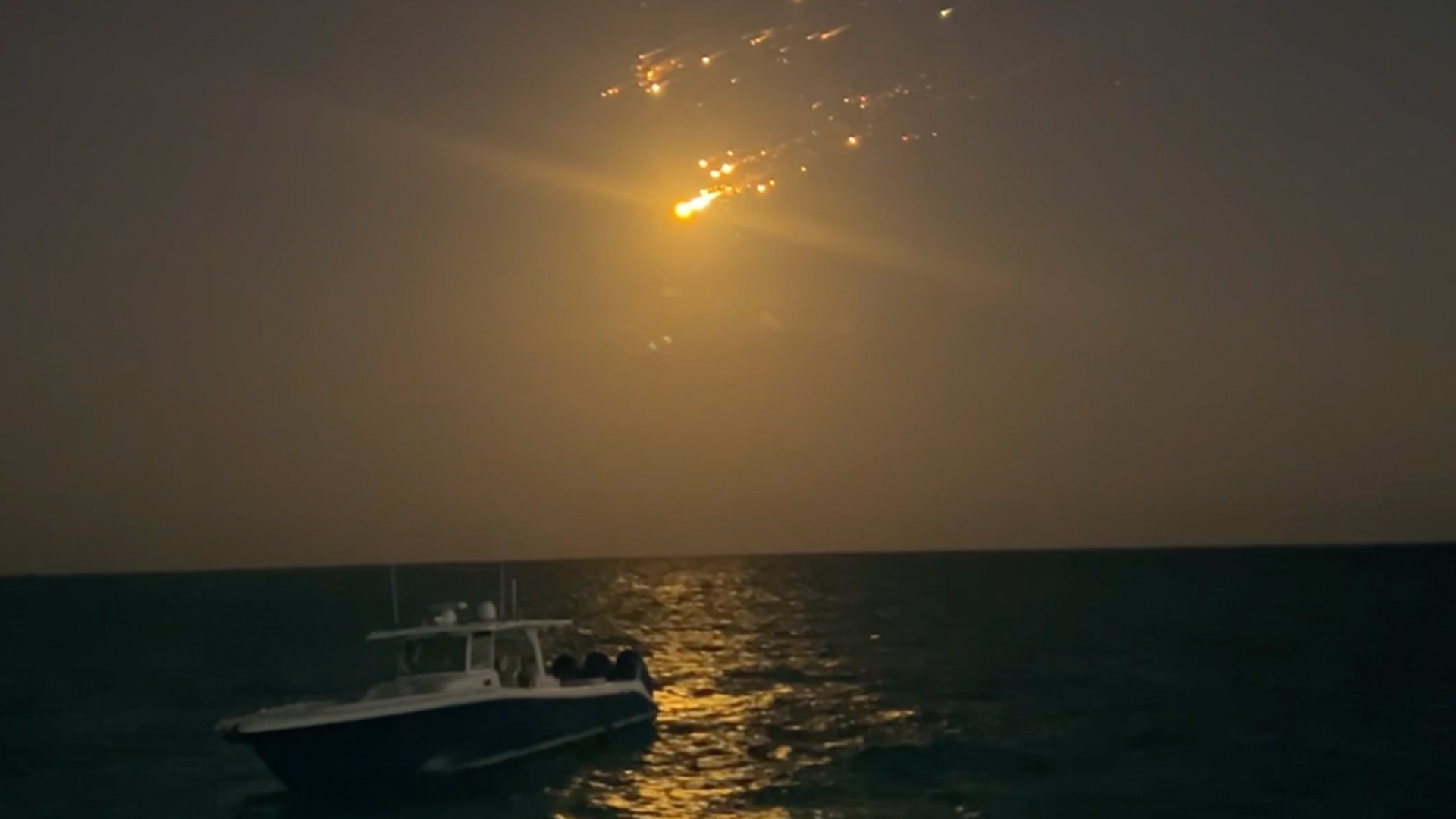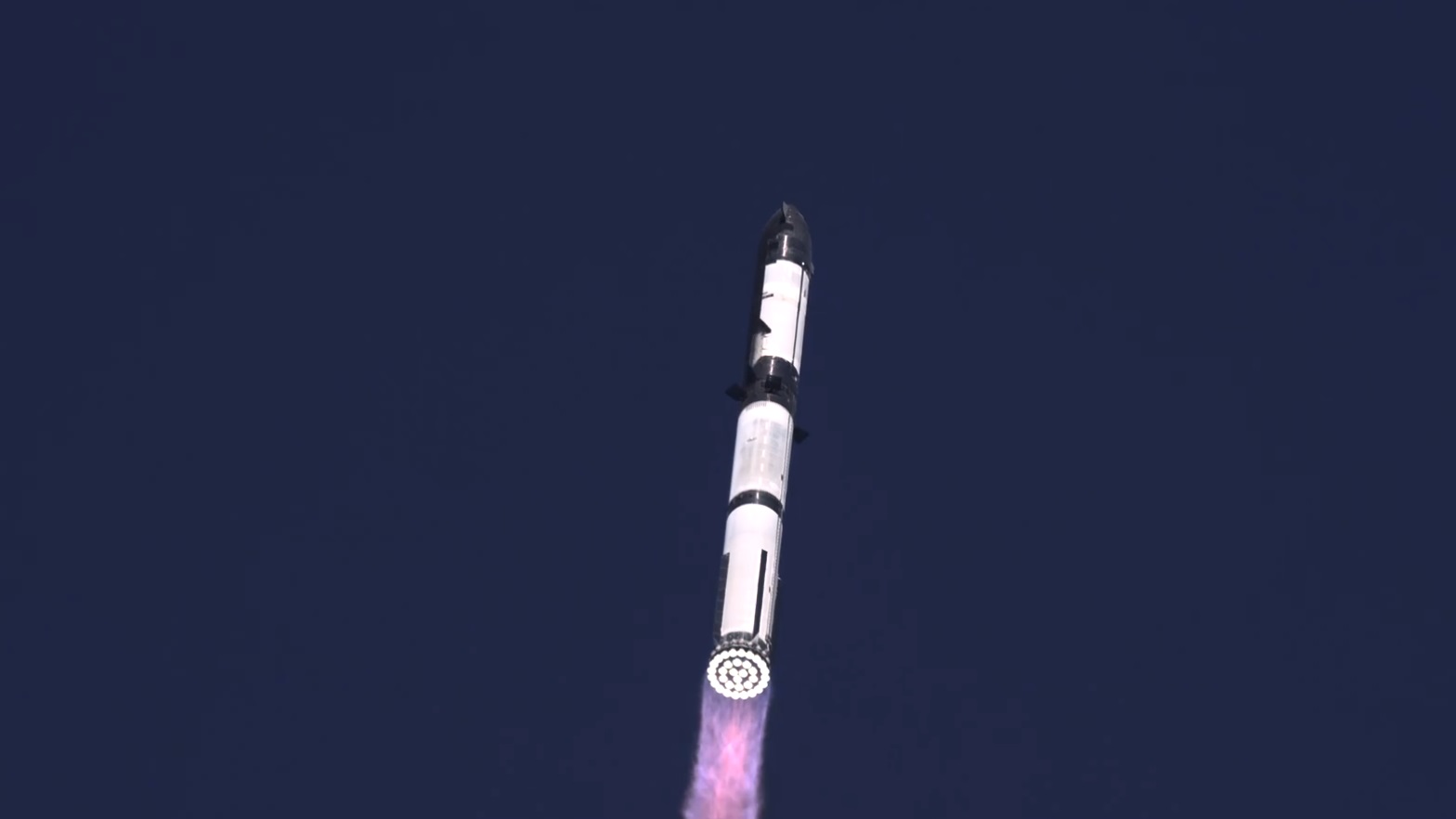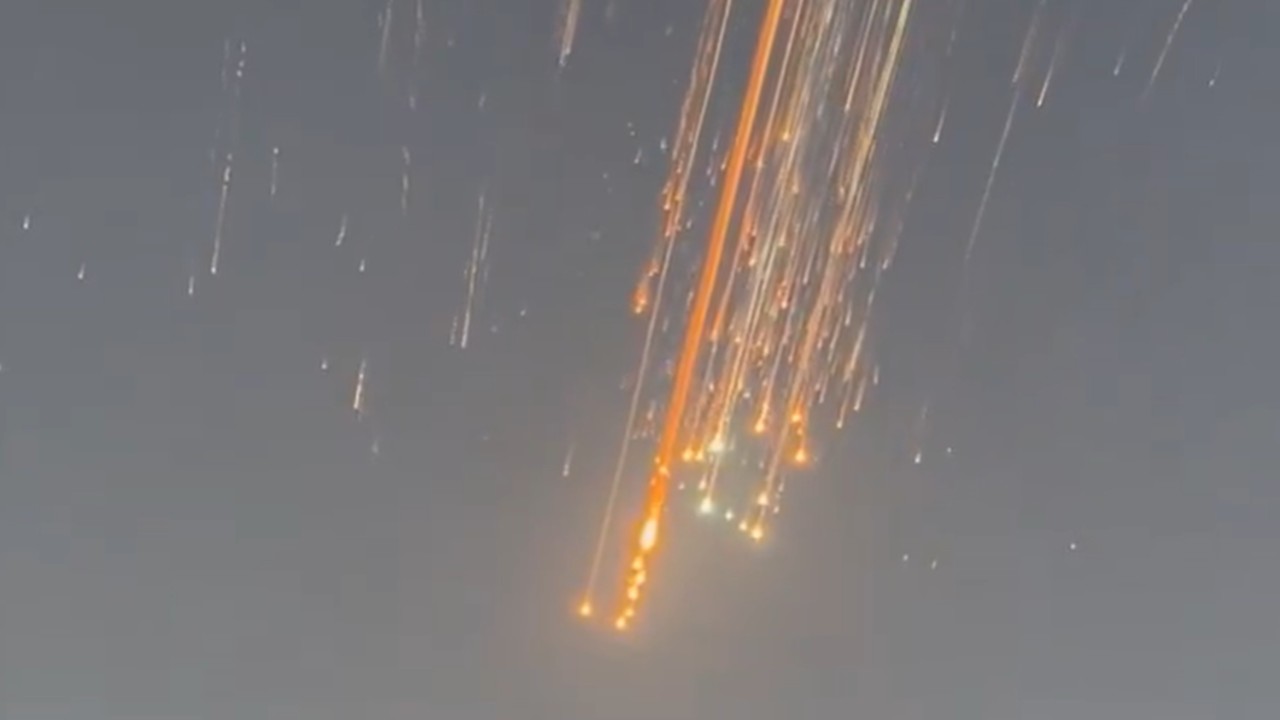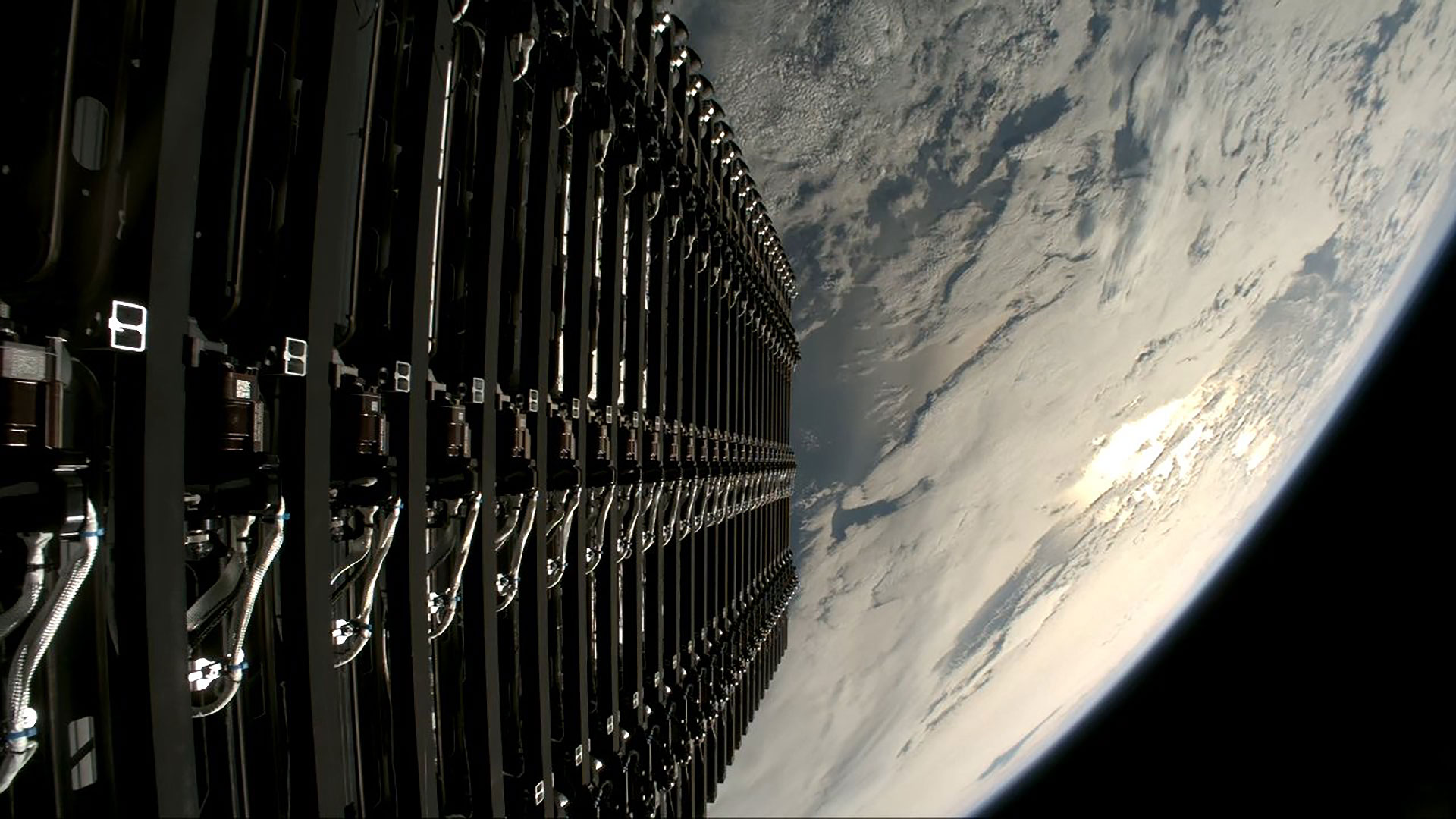SpaceX reveals why its Starship Flight 8 Ship exploded, failure traced to 'flash' in rocket's engines
The Starship Flight 8 investigation clears the way for Starship Flight 9 on May 27.

As SpaceX gears up for the ninth test flight of its super-heavy Starship launch vehicle, the company has released findings from its investigation into the explosion of the rocket's upper stage, referred to as "ship", during its eighth test flight in March.
Flight 8 launched March 6 from SpaceX's Starbase manufacturing and test facility on the southern tip of Texas. The mission largely mirrored that of Flight 7, during which the both vehicles' first stage Super Heavy boosters successfully rocketed back to Starbase to be caught by the launch tower's "Mechazilla" chopstick-like arms. Ship, however, for both Flight 7 and Flight 8, did not fare as well as its Super Heavy counterpart. (Starship Flight 9 is scheduled to launch on May 27.)
Flight 7 and Flight 8 each ended in dramatic explosions over the Atlantic Ocean that could be seen from Florida, the Bahamas and Turks and Caicos, raining fiery Starship debris into the drink below. Flight 7's Ship encountered a propellant leak and fire in the spacecraft's "attic," leading to its explosion and loss. Side-by-side, Flight 8 followed a very similar trajectory, but instead of a fire in the attic, Starship's last flight suffered a "flash" in what could be comparatively called its "basement," which brought about its blazing demise.
In this case, "basement" is Ship's business end with six powerful Raptor rocket engines. The flight plan for Starship's eighth launch called for Ship to deploy four dummy payloads simulating SpaceX Starlink satellites about 17.5 minutes after liftoff, followed by a controlled splashdown in the Indian Ocean off of Western Australia roughly 50 minutes later. But it never got the chance to do either, and now we know why.
A "flash" occurred near one of Ship's center, sea-level Raptor engines, followed by an "energetic event" that led to that engine's shutdown, SpaceX said in an update. The two remaining sea-level Raptors immediately terminated their thrust, as well as one of Ship's vacuum-optimized Raptor engines, causing the vehicle to begin tumbling out of control.

About two minutes after the initial flash, SpaceX lost communication with the vehicle, which triggered the spacecraft's automated flight termination software and subsequent self-destruct.
"The most probable root cause for the loss of Starship was identified as a hardware failure in one of the upper stage’s center Raptor engines that resulted in inadvertent propellant mixing and ignition," SpaceX wrote.
Breaking space news, the latest updates on rocket launches, skywatching events and more!
Super Heavy, too, though successfully returned to Starbase and the warm embrace of "Mechazilla," didn't do so without incident. Only 11 of the Flight 8 booster's 13 engines used for its initial boostback burn were successful in reigniting. Its landing burn as it approached the launch tower saw 12 of 13 engines relight, including one of the previously unlit engines from the boostback burn.
SpaceX traced the cause to "torch ignition issues" on each of the malfunctioning engines, as a result of "thermal conditions local to the igniter," the company said. To mitigate these overheating issues on Starship's upcoming flight, SpaceX says they have reinforced the affected areas with additional insulation.

Starship is designed to fundamentally change and enhance humanity’s ability to reach space. Its eighth flight test was a reminder of the value of putting hardware into a real-world environment as frequently as possible, while still maximizing controls for public safety, to… pic.twitter.com/O9j9BM2IihMay 23, 2025
Fixes for Starship's upper stage came down to tightening some bolts at some of Ship's more critical junctures and improving the plumbing so flammable gases don't ignite when they aren't supposed to:
"Starship’s upper stage will receive additional preload on key joints, a new nitrogen purge system, and improvements to the propellant drain system. Future upgrades to Starship will introduce the Raptor 3 engine which will include additional reliability improvements to address the failure mechanism."
SpaceX says their investigation included more than 100 long-duration test firings of the Raptor engine at the company's McGregor, Texas, test facility, and that its efforts were overseen by the Federal Aviation Administration (FAA), in conjunction with NASA, the National Transportation and Safety Board and the U.S. Space Force. Now, the FAA agrees Starship is ready to fly again.
In a statement released May 22, the FAA says they, "conducted a comprehensive safety review of the SpaceX Starship Flight 8 mishap and determined that the company has satisfactorily addressed the causes of the mishap, and therefore, the Starship vehicle can return to flight."
The same day SpaceX released their Flight 8 investigation results, the company also officially announced the date for Flight 9. Starship's next launch is scheduled for no earlier than Tuesday, May 27, and will be the first launch of a flight-proven Super Heavy booster. Flight 9 will liftoff on the same first stage that supported Starship Flight 7, during a launch window that opens at 7:30 p.m. EDT (2330 GMT).
SpaceX will stream the mission live on their website, as well as their account on X. Space.com will also carry the broadcast on our homepage, starting about 30 minutes before liftoff.

Josh Dinner is the Staff Writer for Spaceflight at Space.com. He is a writer and photographer with a passion for science and space exploration, and has been working the space beat since 2016. Josh has covered the evolution of NASA's commercial spaceflight partnerships and crewed missions from the Space Coast, as well as NASA science missions and more. He also enjoys building 1:144-scale model rockets and human-flown spacecraft. Find some of Josh's launch photography on Instagram and his website, and follow him on X, where he mostly posts in haiku.
You must confirm your public display name before commenting
Please logout and then login again, you will then be prompted to enter your display name.
